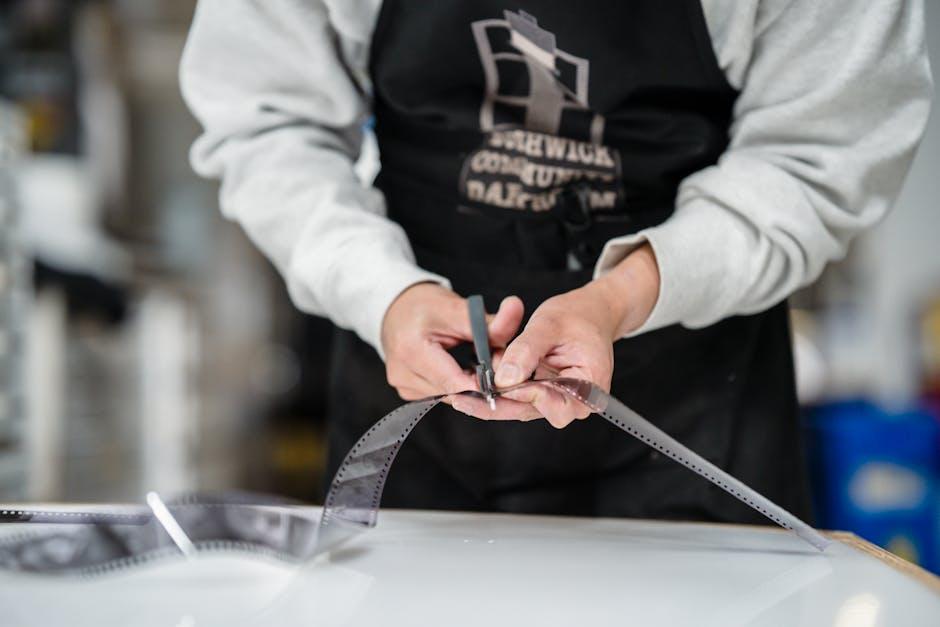In the dim glow of the cinema, audiences once sat captivated, their hearts in sync with the flickering stories on screen. Yet, as technology advances and editing becomes an art form of its own, a subtle shift is emerging in the world of film. Is the relentless pursuit of visual perfection and narrative precision inadvertently dulling the emotional impact that once defined cinematic experiences? This article delves into the intriguing question of whether over-editing is crafting a polished facade at the expense of genuine emotional resonance, exploring the delicate balance between technical mastery and heartfelt storytelling.
Crafting Authentic Narratives: Balancing Precision with Emotion
In the quest for cinematic perfection, filmmakers often face the challenge of maintaining a delicate equilibrium between precision and emotional depth. Over-editing, characterized by an excessive focus on technical detail, can sometimes strip a narrative of its raw, emotive power. This meticulous crafting, while ensuring seamless transitions and visual allure, might inadvertently dilute the genuine human experiences that resonate deeply with audiences.
- Visual Overload: Excessive edits can lead to a visually stunning yet emotionally sterile experience.
- Loss of Authenticity: Too much polish can make characters and stories feel artificial.
- Disconnected Audience: Without emotional engagement, viewers may struggle to connect with the film’s core message.
To craft truly compelling narratives, filmmakers must strike a harmonious balance, ensuring that the heart of the story is never overshadowed by the pursuit of technical brilliance. By embracing imperfections and valuing the organic flow of storytelling, they can create films that not only captivate but also move audiences on a profound level.

The Art of Restraint: When Less Editing Means More Impact
In the world of filmmaking, the allure of technology and the availability of advanced editing tools can sometimes lead creators down a path of excessive refinement. This meticulous approach, while well-intentioned, often strips away the raw, unfiltered emotion that can make a film truly resonate with its audience. By embracing restraint, filmmakers can preserve the authenticity and vulnerability of their work.
Why less editing can enhance emotional impact:
- Authenticity: Raw scenes often convey genuine emotions that resonate more deeply with viewers.
- Intimacy: Minimal editing allows for a more personal connection between the audience and the characters.
- Spontaneity: Unedited moments capture the unpredictable beauty of human interaction.
While the temptation to perfect every frame is strong, sometimes the most impactful stories are those told with simplicity and honesty. The art of restraint in editing invites audiences to engage more fully, encouraging them to find meaning in the spaces left unpolished.

Understanding Audience Connection: The Emotional Cost of Over-Polishing
In the pursuit of cinematic perfection, filmmakers often find themselves caught in the cycle of relentless editing. While this process can enhance visual appeal and narrative clarity, it can inadvertently strip a film of its emotional core. Audiences yearn for authenticity—a connection that resonates on a personal level. When every scene is meticulously polished, spontaneity and raw emotion can be lost, leaving viewers feeling detached.
Consider the elements that forge a genuine connection:
- Imperfections: Moments that feel real and unscripted.
- Relatable Characters: Flawed individuals navigating complex emotions.
- Organic Dialogue: Conversations that mimic real-life interactions.
By embracing a bit of chaos and imperfection, filmmakers can craft stories that resonate deeply, inviting audiences to immerse themselves fully in the experience. The challenge lies in balancing technical precision with the emotional truth that lies at the heart of storytelling.

Guiding the Cut: Strategies for Maintaining Emotional Depth
In the delicate art of film editing, striking a balance between pacing and emotional depth is crucial. Editors can adopt several strategies to ensure the heart of a story remains intact while refining the narrative. One approach is to prioritize scenes that convey character development over purely plot-driven moments. By doing so, the emotional journey of characters remains at the forefront, allowing audiences to connect on a deeper level.
- Embrace Silence: Allow moments of silence to linger, giving viewers space to process emotions.
- Preserve Nuances: Retain subtle gestures and expressions that reveal underlying feelings.
- Focus on Reactions: Highlight characters’ reactions to pivotal events, showcasing their emotional evolution.
Another key tactic is collaborating closely with directors and writers to understand the core emotional beats intended for the film. This partnership ensures that the essence of the story is preserved during the editing process. By adopting these strategies, editors can maintain a film’s emotional resonance, ensuring audiences remain engaged and moved.

